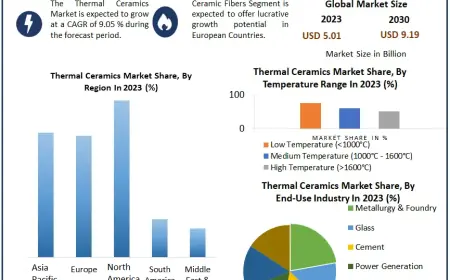How Long Does It Take to See Results from Skin Pigmentation Treatment?
Skin pigmentation issues, such as dark spots, melasma, and sun damage, can affect many people and have a significant impact on their self-confidence.
Skin pigmentation issues, such as dark spots, melasma, and sun damage, can affect many people and have a significant impact on their self-confidence. Fortunately, there are various treatments available to address these concerns, including skin pigmentation treatment that help even out skin tone and reduce discolouration.
Understanding Skin Pigmentation and Treatment Options
Before diving into the specifics of how long it takes to see results, it’s essential to understand what skin pigmentation is and why it occurs. Skin pigmentation issues happen when the skin produces too much melanin (the pigment responsible for skin color) or not enough, leading to uneven skin tone, dark spots, and patches.
Some of the most common types of skin pigmentation include:
-
Hyperpigmentation: Darkening of the skin caused by excess melanin production, often due to sun exposure, acne scarring, or hormonal changes.
-
Hypopigmentation: Lightening of the skin, which can occur due to skin damage or certain medical conditions.
-
Melasma: A type of hyperpigmentation often triggered by hormonal changes, such as pregnancy or birth control use.
To address these issues, several treatments are available. These can range from topical creams and serums to in-office procedures such as chemical peels, laser treatments, and facials like Hydrafacial treatment.
Factors Influencing the Timeline of Results
The time it takes to see visible improvements from skin pigmentation treatments can vary depending on a variety of factors. Understanding these factors can help you set realistic expectations for your treatment journey.
Type of Pigmentation
The type of pigmentation you are treating plays a crucial role in determining how long it will take to see results. For example:
-
Sun Spots and Freckles: These types of pigmentation often respond quickly to treatment, with visible results appearing within a few weeks.
-
Melasma: Melasma can take longer to treat, sometimes requiring several months of consistent treatment before noticeable improvements are visible.
-
Post-Inflammatory Hyperpigmentation: Dark spots caused by acne or injury may take a few weeks to several months to fade, depending on their severity and treatment.
Treatment Method
Different treatment methods work at varying speeds and have different levels of effectiveness. Below is a comparison of some common skin pigmentation treatments and the expected timeframes for results:
Topical Treatments (Creams and Serums)
Topical treatments, such as hydroquinone creams, retinoids, and Vitamin C serums, can take anywhere from 4 to 12 weeks to show noticeable results. These products work gradually to lighten dark spots and even out the skin tone. For more persistent pigmentation, longer use or additional treatments may be necessary.
Hydrafacial Treatment
Hydrafacial treatment is a non-invasive facial treatment that combines cleansing, exfoliation, extraction, hydration, and antioxidant infusion to rejuvenate the skin. While it is not specifically designed for skin pigmentation, it can help brighten the complexion and improve skin texture, which may reduce the appearance of pigmentation over time.
For Hydrafacial treatment, results are typically visible immediately after the procedure, with smoother, more radiant skin. However, Hydrafacial may require multiple sessions over several weeks or months to effectively address stubborn pigmentation issues. Many people choose to incorporate it into their skincare routine for ongoing skin maintenance and improvement.
Chemical Peels
Chemical peels are a popular option for treating skin pigmentation. These treatments use acids to exfoliate the skin, revealing fresher, more even-toned skin underneath. Superficial peels may require several sessions to see significant improvements, while deeper peels can provide faster results but require a longer recovery time. Results from chemical peels typically appear within 2 to 4 weeks, depending on the depth of the peel.
Laser Treatments
Laser treatments, such as fractional laser or IPL (Intense Pulsed Light), are among the most effective options for treating pigmentation issues. These treatments target melanin in the skin and break up pigment cells. Depending on the severity of the pigmentation and the type of laser used, visible results can appear within 2 to 6 weeks. However, multiple sessions may be required to achieve optimal results.
Skin Type and Tone
Your skin type and tone can also impact how quickly you see results from skin pigmentation treatments. For example, individuals with lighter skin tones may see faster results compared to those with darker skin tones, as the treatments may penetrate the skin differently. People with darker skin tones should also be cautious with certain treatments, as they may have a higher risk of hyperpigmentation or scarring.
Consistency and Aftercare
The key to achieving the best results from skin pigmentation treatments is consistency. Following your skincare regimen as prescribed and attending follow-up appointments as necessary will ensure that you achieve the desired outcome. Additionally, proper aftercare is essential to prevent further pigmentation issues, such as:
-
Sun Protection: Always apply broad-spectrum sunscreen to protect your skin from harmful UV rays, as sun exposure can worsen pigmentation.
-
Hydration: Keep your skin hydrated to promote healing and recovery from treatments.
-
Avoid Picking at Skin: Picking at scabs or blemishes can lead to further pigmentation issues.
Following these guidelines can help speed up the process and prevent new pigmentation from forming.
Managing Expectations: What to Expect at Different Stages
Understanding the general timeline for each treatment type can help you manage your expectations as you undergo skin pigmentation treatments. Here’s a breakdown of what you can expect during each stage of the treatment process:
Week 1-2: Immediate Improvements
In the first few days or weeks after a treatment, you may notice some immediate improvements. For example, Hydrafacial treatment will leave your skin feeling smoother and looking more radiant. Chemical peels may cause some peeling or redness during this time, but this is a sign that the treatment is working.
Week 3-4: Visible Changes
After 3 to 4 weeks, you may start to see more visible changes. Pigmentation may start to fade, and your skin tone may appear more even. If you’ve had a Hydrafacial treatment, your skin should continue to look fresher and more vibrant.
Month 2 and Beyond: Significant Results
At the 2-month mark, more significant results should be visible, especially if you’ve undergone more aggressive treatments like chemical peels or laser therapies. For melasma and other stubborn pigmentation issues, it may take several months of consistent treatments to see dramatic results.
Long-Term Maintenance
For long-lasting results, maintenance treatments are often necessary. This is especially true for skin pigmentation treatments, as pigmentation can reoccur if not managed properly. A combination of in-office treatments and a good skincare routine will help you maintain clear, even-toned skin.
Conclusion
The time it takes to see results from skin pigmentation treatments varies depending on several factors, including the type of pigmentation, the treatment method, your skin type, and how consistently you follow your aftercare routine. While some treatments like Hydrafacial treatment can show immediate improvements, others may take weeks or even months to deliver noticeable results. It is essential to be patient and maintain realistic expectations throughout your treatment journey.
What's Your Reaction?
 Like
0
Like
0
 Dislike
0
Dislike
0
 Love
0
Love
0
 Funny
0
Funny
0
 Angry
0
Angry
0
 Sad
0
Sad
0
 Wow
0
Wow
0
















































